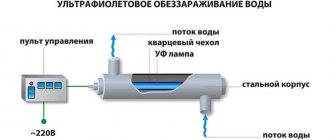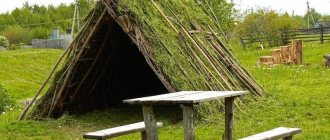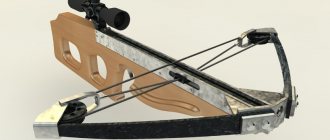Dry alcohol: composition
The composition of this chemical compound may vary. It all depends on the substances that were used in production. Don't think that it's just dry alcohol. Today, however, there is only one composition that is most common; in fact, it is this one that is most often found on the territory of Russia.
Dry alcohol consists of tablets of compressed methenamine along with paraffin. The latter is limited to very small quantities, since it only serves to give the tablet a certain shape. In addition, paraffin retains its original shape intact regardless of the temperature, that is, when burning, pieces will not fall off from it. At least they shouldn't.
The second type of such fuel is metaldehyde. It is a four-unit polymer.
And finally, there is a third type of tablet - calcium acetate solvate. It differs from others only in that it forms ash during the combustion process, which its analogues do not do.
Types of alcohol
Depending on the stage of production, the following types of alcohol are distinguished:
- raw alcohol;
- rectified alcohol;
- drinking ethyl alcohol.
Raw alcohol with a strength of about 88% is obtained by distillation (distillation) of fermented raw materials. In fact, this is ordinary moonshine. It contains a large amount of fusel oils and other impurities.
For purification, raw alcohol is subjected to rectification. The boiling points of impurities contained in the distillate differ from the boiling point of pure ethanol. Impurities that boil at low temperatures are called head impurities, and at high temperatures they are called tail impurities. To separate them, high (up to several meters) distillation columns are used. During this process, the concentration of harmful substances can be minimized, and the alcohol strength can be increased up to 96 degrees.
To produce drinking ethyl alcohol, the rectified alcohol is diluted with distilled water so that the strength of the resulting liquid is 95%.
Medical alcohol, the purity of which is considered by many to be the standard, is properly diluted rectified ethanol.
Dry alcohol: application
These tablets can be used in different ways. The options differ in their sophistication, specificity, or simply popularity. So there will be more than one answer to the question of how to use dry alcohol tablets. The most common procedure is lighting a fire for cooking. In tourist and military kits you can often find dry alcohol tablets, which come complete with a metal stand of the same size.
In addition, such dry fuel is used to launch aerial lanterns. The advantages of using tablets or cubes are obvious: a lot of heat and heat, a fairly long burning time. In addition, there are no sparks that can damage the shell of the ball.
There is a third application that is not so common. Dry alcohol is used as fuel for model steam engines. Only a few enthusiastic people and collectors know about this use case, but this method cannot be excluded from the list either.
In addition, fuel can be used for other purposes, that is, the manufacturer is no longer responsible for the result of your actions. For example, dry alcohol was often used as an inhibitor to remove traces of corrosion on steel parts with hydrochloric acid. This was done in Soviet times, but even now you can find such a strange way of using it.
Methods for using dry alcohol
Although powdered alcoholic beverages were originally intended for oral use only, these products have come to be used in a variety of forms. In modern society, dry alcohol is used as follows:
- for adding to cocktails;
- for the preparation of alcoholic beverages;
- as part of household chemicals;
- to destroy germs and bacteria;
- as part of some medications;
- in cosmetic skin care products;
- as a source of energy in an industrial zone;
- as a flavoring component in the preparation of sweets and ice cream.
Dry alcohol is used by everyone as they please
Everyone decides for themselves whether they should use this product. This is a new product, the effect of which on the human body has not been determined. Until the use of powders is widespread, it is not easy to determine the effects on people of different ages and health conditions.
The unusual format of alcoholic beverages may encourage some people to drink them irresponsibly. It is difficult to control how much alcohol you actually drink. Thus, people who have a tendency to abuse alcohol may relapse.
There is a high risk of developing allergic reactions. Since the product contains chemical components as well as dyes, everyone's body can react individually. Rash and redness of the skin often occurs. Possible headache, dizziness and symptoms of intoxication.
Paying attention to one's own health will encourage a person to exercise caution when deciding whether to drink dry alcohol or choose a safer and healthier pastime.
Disadvantages of dry fuel
To be honest, there are also disadvantages, and their presence is not difficult to explain:
- You will not be able to control the height and strength of the flame - set it on fire once, and then whatever happens!
- Cooking food over such a fire is quite problematic, mainly due to the first reason. You can still warm it up, but only in the field, when there is simply nothing else at hand.
- The flame from such fuel is extremely sensitive to atmospheric phenomena such as wind, so at least a simple screen is definitely needed.
- You can’t buy dry alcohol everywhere – it’s not such a common fuel.
- The purchase will cost you a significant amount, at least if you do not take one or two tablets.
Advantages and disadvantages of combustible fuel
Unlike some other types of fuel, this type of fuel is quite compact. It takes up little space in your backpack and weighs little. Therefore, many people prefer it for use on long hikes. Also an undoubted advantage is the ability to burn even when damp.
There are several disadvantages. The main disadvantage can be considered the inability to control the combustion force. For this reason, it is almost impossible to cook with dry fuel, but please reheat it.
Unlike some other methods of heating food in the field, dry fuel is sensitive to wind. The need to use a wind barrier is a clear disadvantage.
Its cost is not so small. In this regard, dry fuel tablets are inferior, for example, to gas burners. However, it is not always possible to purchase them.
Toxicity of dry alcohol
These tablets themselves are absolutely safe. Naturally, otherwise they simply would not have been released onto the market. However, like any other chemical, some compounds can become truly dangerous to humans. That is, not during combustion, but upon contact with a specific environment.
So, for example, when dry alcohol containing hexamethylenetetramine comes into contact with an acidic environment, the output will be formaldehyde. This substance is extremely toxic. In addition, if such a substance is set on fire, then you are also at risk of ammonia fumes, nitrogen oxide, and hydrogen cyanide. All these compounds are extremely dangerous, especially if ingested - damage to the stomach and kidneys is almost guaranteed in this case. If the tablets are made with metaldehyde, the problems may be the same.
It is also important for you to keep in mind that if an animal or child swallows such a tablet, this will certainly lead to poisoning, which may still be hidden - the tablet will simply stick to the wall of the stomach and will dissolve gradually. Finding out the cause of such poisoning is quite difficult, which will make treatment even more difficult.
Dry fuel for cooking while camping.
Traditionally, dry fuel is most often used by tourists as a convenient means of lighting a fire. Dry alcohol is also usually included, together with a disposable tin stand, in army and other IRPs (individual food rations) for heating canned food; for the same purpose it is periodically used by hunters and fishermen. On sailing trips, dry fuel is used extremely rarely, almost never, for cooking, since the use of gas and even gasoline burners often entails much greater convenience in virtually any conditions.
I’ll start by defining the concept of “efficiency” for dry fuel. The efficiency of a dry alcohol fire will be determined by the rate at which water boils in the boiler and the fuel consumption in this process.
Efficiency consists of different components and has a more pronounced pattern of dependence on them than in similar factors when using gas and gasoline burners.
- On the dry fuel side, the efficiency depends on the diameter of the tablet (or the size of the sides of the briquette), thickness, and the amount of moisture inside - dry fuel is hygroscopic and can absorb moisture, reducing efficiency, and the degree of purity from impurities. The last factor is very important - dry fuel should burn with minimal formation of soot, which reduces the intensity of the flame, burn intensely and hotly, with minimal smoke, and not slowly and with an abundance of formations. As a result, if you compare dry fuel from different manufacturers, you may find a significant difference in efficiency between them. In the boiling rate for good, clean and dry fuel, the diameter of the tablet (or a set of linear dimensions, if it is square) and its thickness will be important. When the amount of fuel decreases as the amount of fuel burns, the intensity of the flame will drop, which means the speed of cooking will decrease: the large thickness of the tablet allows you to delay the moment of reducing the intensity of the flame, especially when periodically cleaning carbon deposits. The diameter of the tablet forms the flame area. The larger the diameter of the bottom of the pot, the larger the desired tablet diameter. If several tablets are used at the same time, then when placed closely they form a flame of greater intensity, which also speeds up the process.
- On the cookware side, the efficiency depends on the diameter of the bottom and the height of the walls of the pot, as, indeed, on all burners. Also, to a certain extent, there is a dependence on the type of stove or fuel stand.
- Separately, we can highlight the dependence on wind, which is much greater than in gas and gasoline burners. The flame in the burners comes from burning vapors or gas coming out under pressure, so it blows off rather weakly. In the case of dry fuel, the flame from its combustion is very sensitive to displacement, so it is better to cook either in a tent (if on one tablet) or in some kind of shelter.
Let's consider the boiling rate of water, and at the same time the overall efficiency and justification for using two types of burners. Let's start with the titanium small stand Esbit ST11.5-TI
This absolutely minimalist stand for dry fuel weighs only 13 grams and is positioned for solo travel in the summer. With such a burner I went on a solo hike to the Kodar ridge, absolutely not using a fire along the route.
In my opinion, on burners for one tablet, it is most effective to use tablets of maximum diameter and thickness. The time before boiling given below is given for tablets with a diameter of 40 mm, a thickness of 13 mm and a weight of 21 grams, produced by ZAO Siberian Plain.
- Half a liter of water with a temperature of +5 degrees in a 0.9-liter pot with a bottom diameter of 110 mm boils (until “breakers” appear) at an external temperature of +24 degrees in an average of 8 minutes 30 seconds, leaving the remainder of a tablet weighing 9 grams , which is put back into the shipping packaging and used the next time.
Considering that an entire tablet of this size burns out in about 16 minutes, half a liter of water can be boiled and continued to boil for 7 minutes 30 seconds. This is usually not enough to cook “not custard” soup, and may not always be enough to disinfect water if it is heavily contaminated (read about drinking water on the route here ). But, if the water is clean and can be drunk raw, i.e., it does not have to be boiled, then the situation turns out to be interesting. When using sublimates (at Kodar that year I went to the domestic Gala Gala), one large tablet can bring a liter of water to a temperature of about 80 degrees, which is enough to drink tea and brew sublimate. If we remain within such minimal limits, then for two weeks we need 28 tablets of dry fuel. The total is 28 * 21 grams = 588 grams of dry alcohol. We add here 13 grams of the weight of the stand and 50-70 grams per container or herm for dry fuel and stand, in the end we get approximately 670 grams. It would seem not much. But, approximately the same weight will be given by a medium-weight gas burner together with packaging and a gas cylinder with a mixture mass of 230 grams. If you bring water to the above-mentioned state on such a burner in the summer, then the cylinder will be enough for about two weeks.
Conclusion: using a similar approach with a miniature stand for dry alcohol makes sense only for very short single events and when minimizing the weight of the equipment. As the duration of the hike increases, switching to a gas burner is much more optimal both in terms of comfort and the cost of gas.
If there is not one traveler, but two or three, then in relation to the dry fuel stand it is more logical to use something more serious and set fire to several tablets at the same time.
Let's take a look at this stand. I used it with tablets of the same thing, but 11 mm thick and weighing 17 grams.
With boiling time and consumption, I got the following figures:
- 1 liter of water with a temperature of +5 degrees in a 2.2 liter pot boils (before the “breakers” appear) at an external temperature of +24 degrees on average in 9 minutes 15 seconds, while the tablets burn almost completely. In total, the boiling time was only a minute longer than that of the gasoline burners that I reviewed in reviews quite recently, but the fuel consumption was 68 grams instead of 25 ml of gasoline.
- 1 liter of ice with a temperature of -15 degrees in a 2.2 liter pot boils (before “breakers” appear) at an external temperature of +24 degrees on average in 19 minutes 45 seconds. In this case, the first four tablets burn completely; as they burn, we add two more tablets, of which 7 grams remain. Total fuel consumption is 88 grams. With gasoline burners, my average boiling time was 15 minutes, and the fuel consumption was 47 ml.
As a result, here too dry fuel makes sense only under the condition of short trips to the forest, or as a backup option. At the same time, the limitation of use inside the tent is associated not only with a large amount of smoke, which not any ventilation can cope with, but also with a large flame, and such heat will come down from four tablets that you will need to put something powerful in terms of flame under the stand /heat insulation.
Conclusion: dry fuel specifically for cooking makes sense on short trips and with a limited number of “table participants,” as well as as a backup source of fuel. In this case, you can benefit from the weight and simplicity/reliability of the equipment. Otherwise, even these advantages disappear, leaving a niche for camping use of dry fuel as a means for lighting a fire and warming up gasoline burners.
Dry fuel - crazy hands
Making dry alcohol with your own hands is quite possible. Even a person who is as far from chemistry as possible in any of its manifestations can do this. Strictly speaking, the process will require virtually no effort from you, although some components for such tablets will be quite difficult to obtain and, perhaps, even very expensive. However, it is possible to give such dry fuel almost any shape - it all depends on your imagination.
Industrially produced dry fuel has virtually no advantages over its homemade counterpart. So it all depends on your desire to learn something new and keep your hands busy on days free from other things.
Application
Today, methenamine is used only for the production of dry fuel. It has a lot of advantages, which makes it so popular among lovers of hunting and just outdoor recreation. Dry alcohol burns well and for quite a long time. One tablet can maintain a stable flame for up to 15 minutes.
Dry alcohol is especially useful in places where it is impossible to get any fuel: mountains, steppes, rocky areas. It can be easily lit even during light rain. Soldiers use this in the field. It’s not for nothing that every fighter is supplied with dry alcohol. It is lit on a small metal stand.
The price of this fuel is low (about 25 rubles per package). It is sold in small tablets that take up very little space in your backpack and can be taken with you on a hiking trip.
Chemical components of the product
In order to make your own dry alcohol at home, you, as mentioned earlier, will need a certain amount of different chemical components. It all depends on which recipe you choose. The easiest way would be to divide them into options. So, the first composition:
- Formalin.
- Ammonia solution.
- Paraffin.
Second manufacturing option:
- Acetaldehyde.
- Sulfuric acid.
Third line-up:
- Ethanol.
- Calcium acetate.
Dry alcohol recipe
The first of the proposed recipes is quite dangerous, since the materials that are used in this case cannot be inhaled. And in general, it would be better to carefully protect yourself from contact with the skin, and even more so on the mucous membranes.
The first step here is this: a small enamel container filled with cool water is placed on the work surface. You need to add one hundred milliliters of formalin there - a forty percent methanal solution is perfect.
The next step is to add ammonia solution to the resulting chemical mixture. One liter of it is needed, more precisely, a twenty-five percent ammonia solution needs four hundred and forty-five milliliters, and up to a liter the total volume is supplemented with water.
It is these two procedures that need to be carried out outdoors, since vapors of both ammonia and methanal can cause serious problems if they enter the human body.
The third step is to evaporate the liquid - you need to achieve crystallization of methenamine. After this is done, you need to filter the resulting crystals and then squeeze them out. Regular toilet paper will help with the latter - you can also use filter paper, but this is not critical.
The last step consists of adding one to three percent paraffin, grinding the resulting mixture and molding the resulting composition into real briquettes. Here is one of the answers to the question of how to make dry alcohol.
DIY metaldehyde
This type of dry fuel, such as metaldehyde, can also be prepared at home. What you need has been described above. So let's go straight to the workflow.
First of all, you need to dilute the acetaldehyde poured into a container (it can be characterized as follows: dull, volatile water with a characteristic unpleasant odor) with sulfuric acid diluted in a one-to-one ratio.
In fact, this is the whole process. If you did everything correctly, the acetaldehyde will be converted into hard metaldehyde, which is suitable for cutting flammable bars from it into the desired shape and size.
It seems that it would be superfluous to remind about caution - you need to be extremely careful with sulfuric acid.
Combustible "soap"
The next type of dry fuel that can be prepared is calcium acetate solvate. There is nothing complicated in this recipe - it is the simplest of all those given in the article. You just need to get a little ethyl alcohol - two hundred grams, or rather one hundred and seventy, is enough for the recipe, and pour it into a metal container. After which ten milliliters of calcium acetate is added (it can be purchased in the form of a concentrated aqueous solution, and the required amount for this particular substance is indicated here). After this, the liquid will instantly harden, turning into a translucent whitish soap.
That's all, actually. All you have to do is cut cubes, tablets or flammable bars of any other shape from it.











